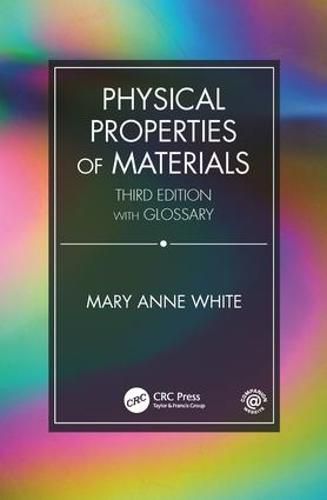Readings Newsletter
Become a Readings Member to make your shopping experience even easier.
Sign in or sign up for free!
You’re not far away from qualifying for FREE standard shipping within Australia
You’ve qualified for FREE standard shipping within Australia
The cart is loading…






Designed for advanced undergraduate students and as a useful reference book for materials researchers, Physical Properties of Materials, Third Edition establishes the principles that control the optical, thermal, electronic, magnetic, and mechanical properties of materials. Using an atomic and molecular approach, this introduction to materials science offers readers a wide-ranging survey of the field and a basis to understand future materials. The author incorporates comments on applications of materials science, extensive references to the contemporary and classic literature, and 350 end-of-chapter problems. In addition, unique tutorials allow students to apply the principles to understand applications, such as photocopying, magnetic devices, fiber optics, and more.
This fully revised and updated Third Edition includes new materials and processes, such as topological insulators, 3-D printing, and more information on nanomaterials. The new edition also now adds Learning Goals at the end of each chapter and a Glossary with more than 500 entries for quick reference.
$9.00 standard shipping within Australia
FREE standard shipping within Australia for orders over $100.00
Express & International shipping calculated at checkout
Designed for advanced undergraduate students and as a useful reference book for materials researchers, Physical Properties of Materials, Third Edition establishes the principles that control the optical, thermal, electronic, magnetic, and mechanical properties of materials. Using an atomic and molecular approach, this introduction to materials science offers readers a wide-ranging survey of the field and a basis to understand future materials. The author incorporates comments on applications of materials science, extensive references to the contemporary and classic literature, and 350 end-of-chapter problems. In addition, unique tutorials allow students to apply the principles to understand applications, such as photocopying, magnetic devices, fiber optics, and more.
This fully revised and updated Third Edition includes new materials and processes, such as topological insulators, 3-D printing, and more information on nanomaterials. The new edition also now adds Learning Goals at the end of each chapter and a Glossary with more than 500 entries for quick reference.